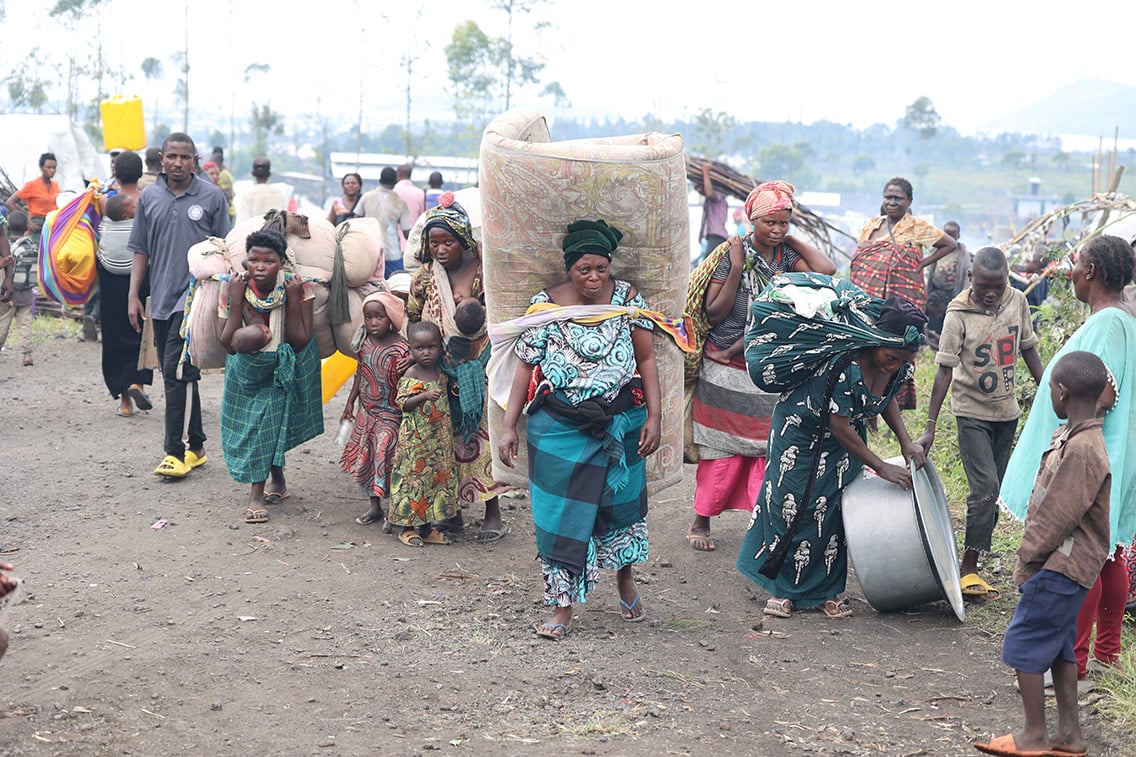Congolese refugees in Zambia await DRC election before returning home
Congolese refugees in Zambia await DRC election before returning home

MWANGE REFUGEE CAMP, Zambia, Mar 23 (UNHCR) - After decades of conflicts in the Democratic Republic of the Congo (DRC), the 43,000 Congolese refugees who found safety in UNHCR camps across the border in Zambia are now waiting to see if a June election in DRC will show it is safe to go home.
"They are ready to go; our surveys show up to 90 percent would want to go back this year after the elections," said Roy Mwamba, a UNHCR field worker in Mwange Camp. "They said after the election they would be certain about what is going to happen in the Congo. They are tired of having to run."
The complexity of organising repatriation to DRC before the paralyzing rainy season starts in October means there is unlikely to be a mass return in 2006 regardless of whether the election runs smoothly. But there is clearly a desire among many to go home.
Last year, 1,200 Congolese returned from one camp on their own, having handed in the cards that entitled them to rations. They preferred to face the uncertainties of life back home rather than remain in exile. In preparation for a possible organised return movement this year, UNHCR has contingency plans to move funds into helping refugees go home as soon as possible.
Most of the Congolese refugees are located in two camps set up by UNHCR and the government of Zambia in the north of the country. Mwange is the largest, with 20,000 people, followed closely by Kala with about 19,000 Congolese. In addition, there are 3,500 Congolese among the 14,000 residents of Meheba Camp, which is near the border further west and also shelters Rwandan and Angolan refugees. A further 17,000 refugees from DRC have spontaneously settled in Zambian cities and the countryside.
Most of the Congolese now in Zambia fled the province of Katanga between 1999 and 2002 to escape the war in DRC. This province had also faced war in the 1960s when it attempted to secede.
The Democratic Republic of the Congo, a country the size of western Europe, has long had a troubled history. Although a comprehensive peace agreement in DRC was reached in December 2002, there has been continuing trouble in some areas between rebels and the government.
While Congolese refugees in Zambia are waiting to see what the result of the election will mean for them - which parties win, what tension it creates, what potential there is for violence - they pass the time preparing for their return in the camps.
"Some might stay here but most would like to go back to Congo," said Katato Kimpinde, who fled DRC as rebels approached his village in 1999. "I am thinking of going back, maybe in 2007 - it depends on the security situation. Economic conditions here are not good for me; I don't work, I have no source of income and I have not learned any skills."
Despite the hardships that come with life as a refugee - a foreigner in another country always faces an uncertain future and limited rights - Kimpinde is realistic about the benefits of asylum in Zambia. "I can say I am better here than in the Congo - here there is peace."
Unlike the rows of tents often seen in pictures of emergency refugee camps, the camps in Zambia are made up of traditional grass-roofed huts scattered over several square kilometres. Except for the neat grid-pattern of roads through the camps, they appear much as other villages in the thinly populated bush areas near the Zambian border with DRC.
Refugees have access to medical care in a clinic in each camp, some vocational training and elementary school education for all children. The refugees grow some maize, despite poor sandy soil, but depend mainly on food rations distributed by the World Food Programme (WFP).
After a 50 percent cut earlier this year because of a lack of funding, the monthly rations, exceeding 2,100 calories per day, are now back to normal. But to do this WFP has been borrowing from its programmes elsewhere and still faces a $4.4-million shortfall in funding for its Zambia supplies in 2006, which could again force cuts in August.
Much of the work on programmes in the camps is carried out by refugees. Both the medical workers in the clinic and the teachers in the schools are refugees who performed similar jobs before they had to flee DRC. In the camp schools, in preparation for their return, children are being taught in French and Swahili - neither of which are used in English-speaking Zambia.
In a class in one brick-walled school, young boys and girls take turns standing in front of their fellow students to do role-plays of a meeting between two French-speaking Congolese: shouting greetings at one another, they act out something that may well be their daily reality before too long.
By Jack Redden in Mwange Camp, Zambia








